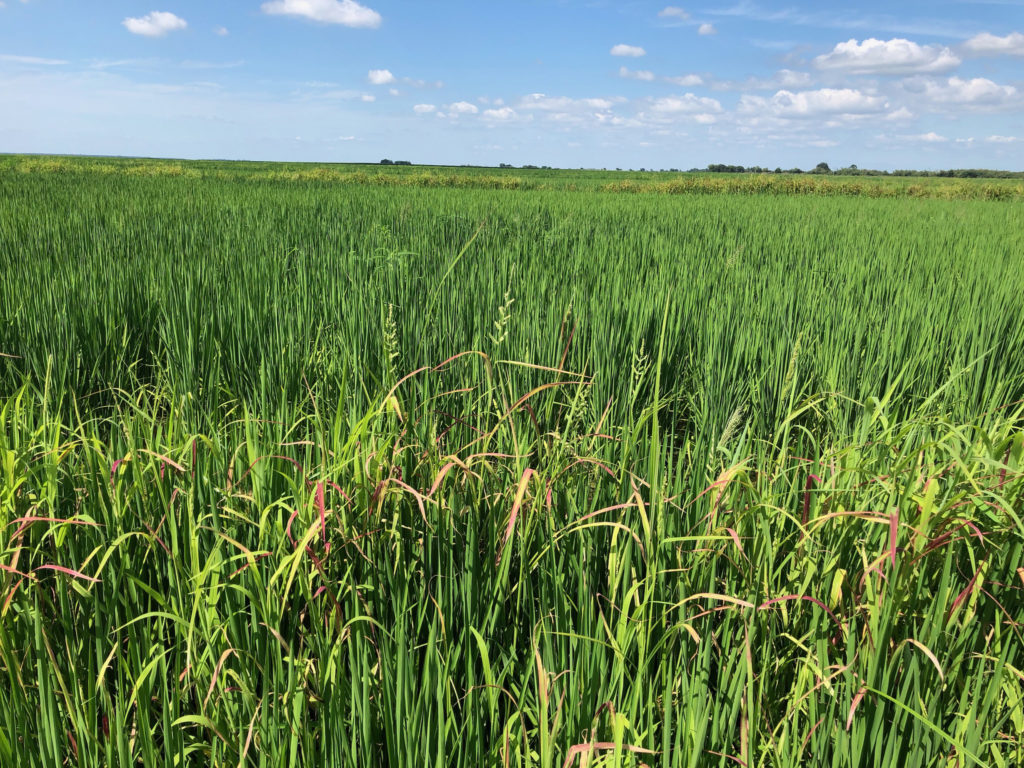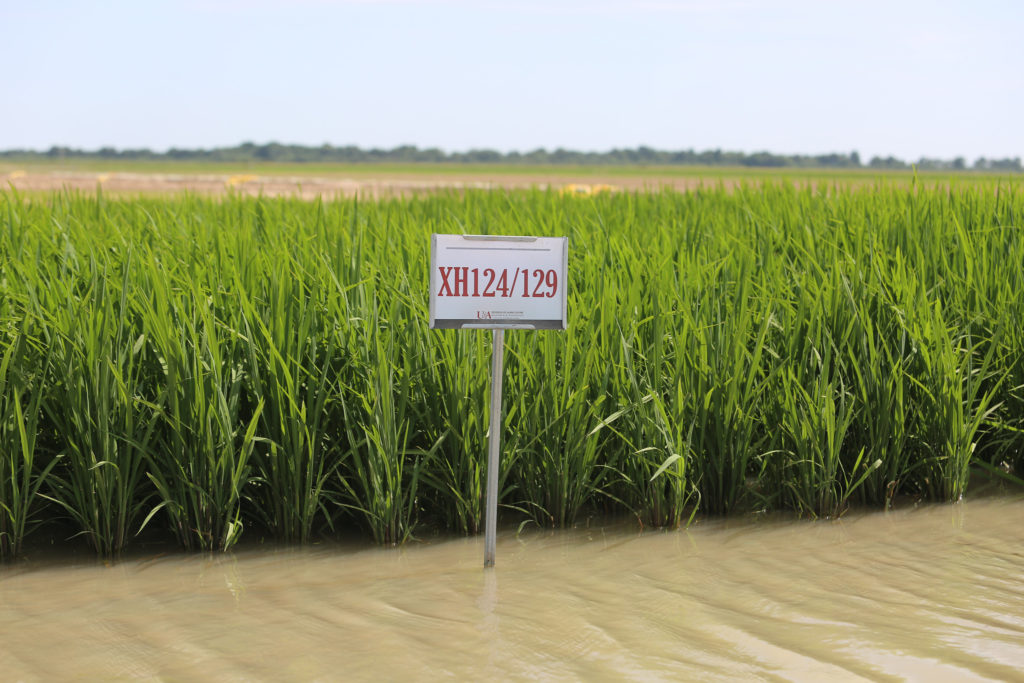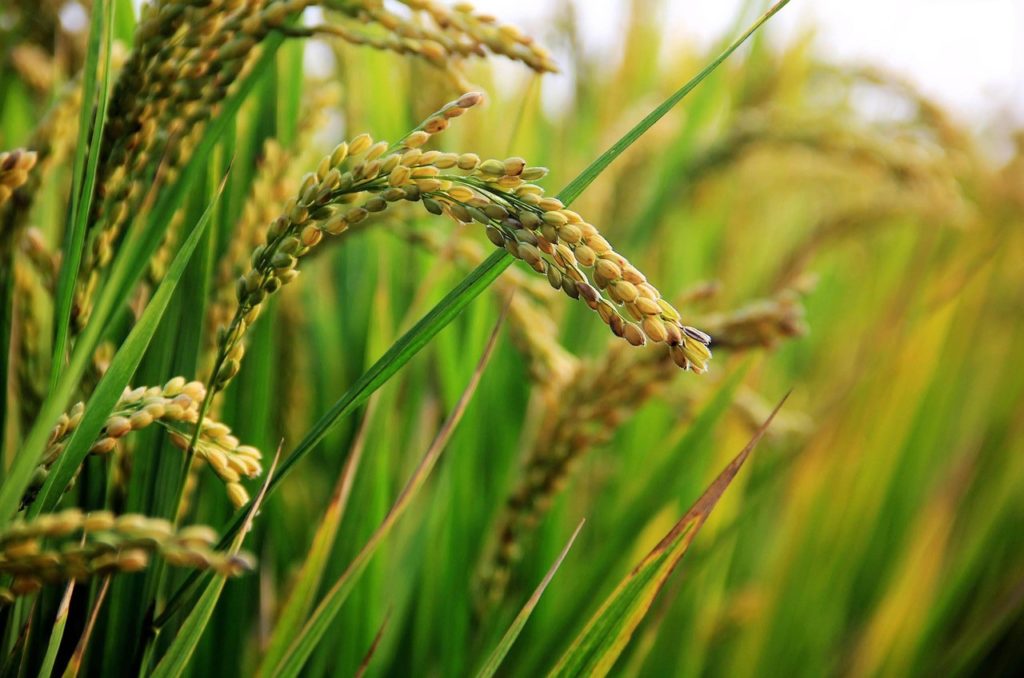How to start a rice farm

Grown throughout the world, rice is a staple food for more than half of the world’s population. In many countries, it’s grown in small paddies for personal consumption and to sell locally. But in the United States, most people have no idea how to start a rice farm.
“Rice is very unique,” said Dustin Harrell, research coordinator at Louisiana State University’s rice research station. “It’s an expensive crop to grow equipment-wise and irrigation-wise.”
In the U.S., small-scale rice farms are rare. Instead, the majority of the country’s rice is grown by large, highly mechanized operations located in four regions. They are the Arkansas Grand Prairie; the Mississippi Delta (parts of Arkansas, Mississippi, Missouri and Louisiana); the Gulf Coast (Texas and southwest Louisiana); and the Sacramento Valley of California.
“We have around 1,000 rice growers in the state [of Louisiana], and most of them are probably, on average, 2,000-acre farms,” said Harrell.
Yet some small farmers are interested in growing this starchy grain, and some have found success.
Where you can grow rice
In general, rice grows best in areas that have high average day-time temperatures but cooler nights during the growing season, according to the U.S. Department of Agriculture. Also, rice will grow best in an area that has a plentiful supply of water and an even land surface with a subsoil that inhibits the percolation of water.
That being said, farmers throughout the world have proved that certain rice varieties can be grown without irrigation systems or flooding. In addition, some varieties of rice have been successfully cultivated in the northern reaches of the U.S.
So why is most of the country’s rice grown in four specific regions?
“Obviously the climate plays a big part in growing rice, but probably the main thing is the infrastructure we have down here,” said Harrell. “We need the rice mills and facilities to move that rice and ship it out. About 50 percent of the rice [produced in the U.S.] is exported.”
Small scale rice farming

“The majority of rice worldwide is still grown on a very small scale,” said Jarrod Hardke, rice agronomist at the University of Arkansas Cooperative Extension Service. “It’s hand planted, hand-harvested, and dried and stored for consumption. That’s still extremely prevalent worldwide, but not so in the U.S.”
Nevertheless, a handful of U.S. small farmers are giving it a try, including Ben Rooney, director of the Maine Rice Project. On his small farm in Benton, Maine — well north of what would be considered the ideal region for growing rice — he grows about an acre of rice.
In his small rice paddy, Rooney has experimented with growing around 50 varieties of rice, whittling it down to about a dozen varieties that he sells commercially for food and animal feed. Among the varieties he grows is are a few upland rice varieties from Europe, a medium grain from Pakistan and a sticky rice from Japan.
“The major drawback for the small farmer is the equipment,” Rooney said. “So if you want to be growing rice on a small scale, you can plant it all right, but to process it, you still need that equipment if you want to make it into food.”
Rooney has done plenty of research on small scale rice farming. He’s learned that in some other countries, such as Japan, communal rice farming equipment is common. He’d like to see that be the case throughout the U.S., but instead, he had to find and purchase his own equipment.
The processing equipment that Rooney uses is human-powered, and much of it is second hand. He even fabricated a rice hauler based on an antique rice hauler. Getting started with rice wasn’t easy, but Rooney believes it was worth the effort.
The goal of the Maine Rice Project is to get more people growing and eating local, sustainably grown rice and grain throughout Maine.
“Eating fresh rice, it’s so different. I really enjoy it,” Rooney said. “I also like that it’s easy to save the seed. I’ve been seed saving for a while. It’s a nice thing to share and sell.”
How to plant rice
Rice is a semi-aquatic annual grass that comes in many varieties, known as cultivars. Differing in texture and taste, these varieties also vary somewhat in the conditions in which they grow best.
For example, upland varieties are usually grown on dry soil, while lowland varieties are grown in flooded paddies. But that’s not all. Soil preparation, seed distribution, flooding practices and irrigation systems can vary greatly among rice farms.
“Unlike corn and soybeans, rice is not grown or planted in one way,” Harrell said. “There are a lot of different ways.”
Each method of growing rice has its pros and cons, Harrell said.
For example, growing rice in shallow pools of water — known as paddies — helps to keep down weeds, which can easily outcompete young rice plants. Water can also reduce the likelihood of rice blast fungus, which can completely wipe out a crop. However, not all properties are suitable for creating a rice paddy, and maintaining it can be challenging.
“For us, I think water and water management is probably the biggest issue,” said Whitney Brim-DeForest, rice advisor for the University of California Cooperative Extension. “Sometimes we don’t have as much water as we’d like. And in the industry, we do a lot of water quality sampling to make sure we aren’t putting certain things into the water system. A lot of herbicides and pesticides have been banned in California because of that. We’re very environmentally conscious about how much our crop interacts with wildlife systems.”
Some rice planting practices are regional and may be tied to local farming culture. For example, in California, most rice paddies are seeded by airplane. While in the Mid-south, more farmers seed into dry ground using a drill seed, then flood the paddies.
Another method of rice farming is to grow the rice in rows, like corn, and irrigating between the rows. And some farmers even transplant rice from greenhouses, a laborious process that would allow for farmers to grow a greater variety of rice (ones that take longer to mature) in colder climates.
To decide which method is best for you, and for more detailed information on rice production, Hardke suggests farmers read the Arkansas Rice Production Handbook, produced and published by the University of Arkansas Division of Agriculture Cooperative Extension Service. The handbook, which was edited by Hardke, provides recommendations to rice farmers based on extensive research, as well as diagrams and explanations of various rice-growing methods.
Rice pests and other challenges

Every crop comes with its unique challenges, and rice is no different.
One decision you’ll have to make early on as a rice farmer is whether or not you’ll be using herbicides or fungicides. The top pest for rice crops in the United States is the rice water weevil. It’s larvae eat the roots of rice, killing the plant from the bottom up. The rice stink bug is another common problem. This flying insect will pierce rice grains and suck out the juices, which results in an undesirable product known as “pecky rice.”
While these pests can be devastating, one of the most common problems that rice farmers face is weeds.
“Rice is just not highly competitive against weeds no matter where you are in the world,” Brim-DeForest said. “That’s one reason to transplant. That’s also why we flood. The water keeps the weed pressure down quite a lot.”
In addition, weather events can significantly affect rice. High winds can knock rice plants down. Droughts can impact irrigation systems. And too much rain early in the season can prevent rice farmers from preparing the soil.
“It delays our ability to plant because the fields aren’t dry enough to get equipment in,” Brim-DeForest said. “We were severely delayed this year. About half of our fields weren’t planted on time. We’ll have to see how that plays out.”
How to process rice
The process of transforming a rice plant into grains that are ready to be cooked involves several steps, all of which require equipment. This equipment will vary depending on the size of your operation.
For large-scale farmers, rice farming includes combines, large mills and even airplanes to drop seed. But for small-scale farmers, the equipment is usually much simpler. Once dried, the husk is removed from rice grain through a process called winnowing, which involves a fan and a special screen.
“It can be cost-prohibitive,” Rooney said of rice processing. “One of the things I’m passionate about is having equipment that people can use. There are a few people who use my equipment right now, but I’m sort of working out the kinks.”
The availability of small-scale rice farming equipment has improved in recent years, Hardke said. Small rice threshers and mills are available for purchase online through several manufacturers, he said, though they’re often intended for research purposes and are called “sample rice mills.”
For people who are looking to get into small-scale rice farming, Hardke suggests that they start small and research the crop as much as possible.
“Work out that methodology,” he said. “[A rice paddy or plot] doesn’t have to be very big at all to get a better understanding of how to manage your water and overall fertility and nitrogen and how to get it harvested — and how much work those different tasks are going to involve. Each of those steps along the way can be very consuming. You’re going to get a lot of learning done very fast.”

So much to know and appreciate about rice.